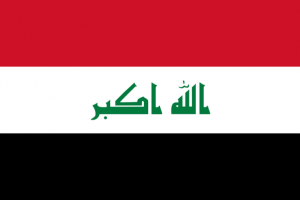Language/Judeo-iraqi-arabic/Grammar/Plurals
Hi Judeo-Iraqi Arabic learners! 😊
In this lesson, we will be discussing plurals in Judeo-Iraqi Arabic, which is an important topic to learn if you want to improve your Judeo-Iraqi Arabic skills. By the end of this lesson, you will be able to form and understand plurals of nouns and adjectives.
Consider broadening your understanding by checking out these related lessons: Give your Opinion, Negation, Conditional Mood & Pronouns.
Basics of Plurals in Judeo-Iraqi Arabic[edit | edit source]
In Judeo-Iraqi Arabic, most singular nouns are made plural by adding the suffix -īn to the end of the word. However, there are also exceptions to this rule. It is important to learn the plural forms of nouns and adjectives in the context of the language in order to master this topic.
For instance, singular nouns that are feminine and end with the vowel -a are changed into the plural by adding -āt to the end of the noun. Let us illustrate this point further with some examples:
| Judeo-Iraqi Arabic | Pronunciation | English |
|---|---|---|
| بيتّا | bayt-a | a house |
| بيوتًا | biyūt-āt | houses |
| كتابًا | kitāb-a | a book |
| كتبًا | kutub-īn | books |
| كتبةٍ | kutub-a | a book |
| كتبًة | kutub-āt | books |
Note that the pluralization of the word "books" changes depending on if it is a masculine or feminine noun (كتبًا for the former and كتبًة for the latter).
Dual Plural in Judeo-Iraqi Arabic[edit | edit source]
In addition to the above examples, Judeo-Iraqi Arabic also has a dual plural. This is used when two of an object are present, and the noun is said in a dual form. The dual plural usually ends with the suffix -ayn. Some examples to illustrate this rule are shown below:
| Judeo-Iraqi Arabic | Pronunciation | English |
|---|---|---|
| اِيدًا | īd-a | a hand |
| اِيدَيْن | īdayn | hands |
| جدًّا | jadd-a | a grandfather |
| جدَّيْن | jadd-ayn | grandfathers |
It is important to note that the usage of the dual plural is not as prevalent in every day speech as it is in other dialects of Arabic, and its use is typically reserved for more formal or literary settings.
Sound Changes in Plural Formation in Judeo-Iraqi Arabic[edit | edit source]
Another important aspect to understand is the sound changes that occur in order to form the plural in Judeo-Iraqi Arabic. These sound changes include shifts in vowel patterns, adding or subtracting consonants, or doubling or tripling of consonants. The following examples illustrate some of these sound changes:
| Judeo-Iraqi Arabic | Pronunciation | English |
|---|---|---|
| بَاب | bāb | a door |
| اَبْواب | abwāb | doors |
| دَرْس | dars | a lesson |
| دروسٍ | durūs | lessons |
| كَتَب | kitab | a book |
| كِتَابون | kitāb-un | books |
Some Exceptions[edit | edit source]
As with many aspects of language, there are exceptions to the rules that govern pluralization in Judeo-Iraqi Arabic which can be somewhat difficult to learn. Some of these exceptions include:
- Some feminine nouns that end with the consonant -at or the vowel -e will take the suffix -āt:
| Judeo-Iraqi Arabic | Pronunciation | English |
|---|---|---|
| نَبِيذ | nabiidh | wine |
| نَبِيذاَت | nabiidhaat | wines |
- Some masculine, one-syllable nouns can take the dual plural. For instance، when referring to two eyes the noun is said in a dual form instead of the normal plural:
| Judeo-Iraqi Arabic | Pronunciation | English |
|---|---|---|
| عينًا | āyn-a | an eye |
| عينَيْن | āyn-ayn | eyes |
- Some masculine nouns that end with certain consonants will take the suffix -īn. This suffix replaces certain endings, such as those which end with –ē, but not -ā nor -ū.
| Judeo-Iraqi Arabic | Pronunciation | English |
|---|---|---|
| كِبْرَيَاّة | kibrāyāh | pride |
| كِبْرَيَاَّةِيْن | kabrayāt-īn | prides |
Dialogue in Judeo-Iraqi Arabic[edit | edit source]
To get a better understanding of pluralization of nouns and adjectives in Judeo-Iraqi Arabic, let's see an example dialogue between two people:
- Person 1: ما أكلتي برتقالًا ولا برسيمونَا؟ (ma'akiltī bartugal-an walla barsīmun-ā? - Did you eat an orange or a lemon?)
- Person 2: أكلتُ بلحًا و تفاحَةَ (akaltu balahe-n watafaħ-ah - I ate a date and an apple.)
Conclusion[edit | edit source]
We hope this lesson has been informative for you, and you now have a better understanding of how pluralization of nouns and adjectives is formed in Judeo-Iraqi Arabic. As you continue to improve your skills in Judeo-Iraqi Arabic, keep practicing and asking for help when needed. To learn more about Judeo-Iraqi Arabic Grammar, visit Grammar section of the Judeo-Iraqi Arabic language page on Polyglot Club. To practice speaking with native speakers, find some at Find native speakers and ask them any questions you may have!
➡ If you have any questions, please ask them in the comments section below.
➡ Feel free to edit this wiki page if you think it can be improved. 😎
Sources[edit | edit source]
Well done on mastering this lesson! Don't miss these related pages to expand your knowledge: Questions, How to Use "Have", Future Tense & How to Use Be.

